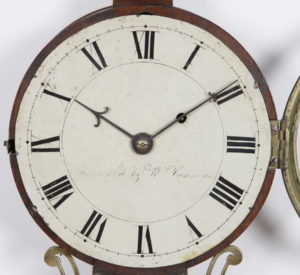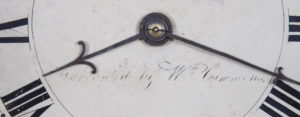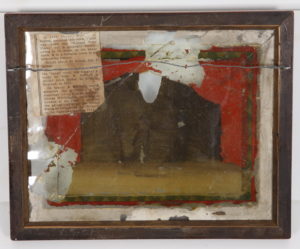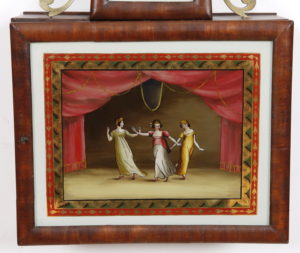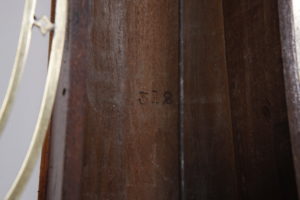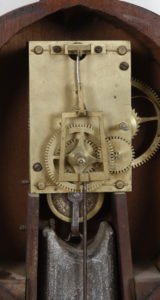William Cummens Roxbury
SOLD
William Cummens (1768-1834) was one of the renowned Simon Willard apprentices who worked in Roxbury Massachusetts. Many of the period details of his work are closely related to the work of Simon Willard including the use of the “T” suspension bridge that supports the pendulum, barbed hands, cast lead weight with “duck bill” hook, painted iron dial retained by two guide pins and two “L” head screws, and the box frame retaining lock fabricated in the manner of a winding arbor …in the front and a latch at the back. Overall the clock measures 33 X 10 X 3 3/4 inches. The backboard of the case is New England White Pine and die stamped 312. The frames are also matching and numbered 312 as was the practice in Boston for case parts. The “T” bridge movement is slightly smaller than the “first generation” Simon Willard C. 1805 version but retains the classic double or “T” suspension bridge as well as the filister head through bolts that secure the works to the backboard. The frames are Mahogany with “Torus” molded facings executed in figured Mahogany veneer. The glasses were restored many years ago by Cindy Burleigh and I have preserved the remaining pieces of the box tablet and mounted it in a frame that can be hung along side the clock. The throat glass was completely shattered and impossible to reconstruct and mount however the restoration is a perfect execution of the original. The painted iron dial retains the original signature and represents a choice untouched example by William Cummens. The finial is original and so are the side arms, and cast brass bezel. One of the nice surprises to find in this clock is an outstanding example of an original cast lead weight with “duck bill” hook, notwithstanding a small amount of loss to the very tip of the “duck bill.” All in all a very nice example of a Second Generation Patent Timepiece by one of Simon Willard’s most famous apprentices. The works have been professionally serviced and the clock runs great and keeps time.


